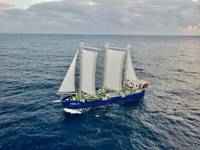Dynamic Platform's Role in Reducing Superyacht Engineering by Months
C-Job Naval Architects has been an innovator across many maritime sectors, and now it has targeted the superyacht market, with recently published research claiming it can shave nearly five months off the 'time to market' for new superyarchts via its 'Dynamic Platform.'
C-Job said this time saving can be achieved with reduced engineering time while still offering owners a fully customized vessel.
Stefan van der Harst, Junior Naval Architect at C-Job, is the man behind the research, and he proposes disconnecting the engineering of the lower part of the vessel and the upper part of the vessel. Looking at the trending superyacht size: between 50 and 80 meters. The upper part of the vessel is unique to each owner whereas the lower part, non-owner spaces, show great commonality.
“The lower part of the vessel houses more of the technical and crew areas," he said. "Space claiming is exerted by all three disciplines to get the right space reservation in the final design. However, a great portion of early design phases is consumed by iterating the design, this to solve all clashes and grid mismatches.”
The dynamic platform is a tool that is based on scale-to-order philosophy. The platform translates the owner’s wishes into a finished basic design global model of the lower part of the ship. It does this through three stages, each stage more detailed than the previous. In the first stage a default model is chosen, the second stage introduces modularity to cope with variations in arrangement and the third stage scales the model to the desired dimensions.
He continues “By eliminating the ‘space claim clashes’ and ‘grid mismatches’ via the Dynamic platform in an early stage of design, a significant design time reduction can be found of up to four-and-a-half months. This is half of the average time it currently takes to engineer the concept and basic design phase.
“More research is needed to make the Dynamic Platform a reality, however, the first insights are promising. Not just for concept and basic design phases, detail engineering could benefit as well as yachts outside of the 50 to 80 meters ranges.”





